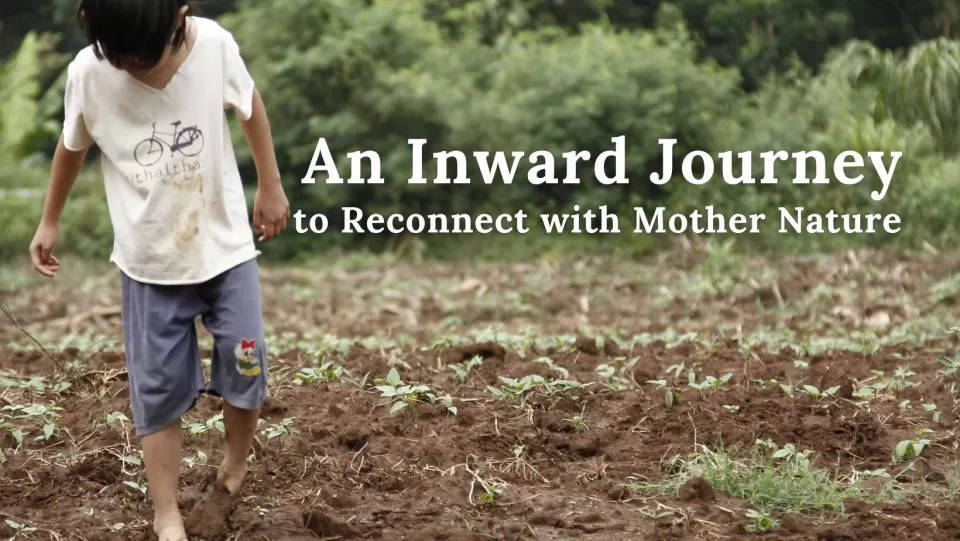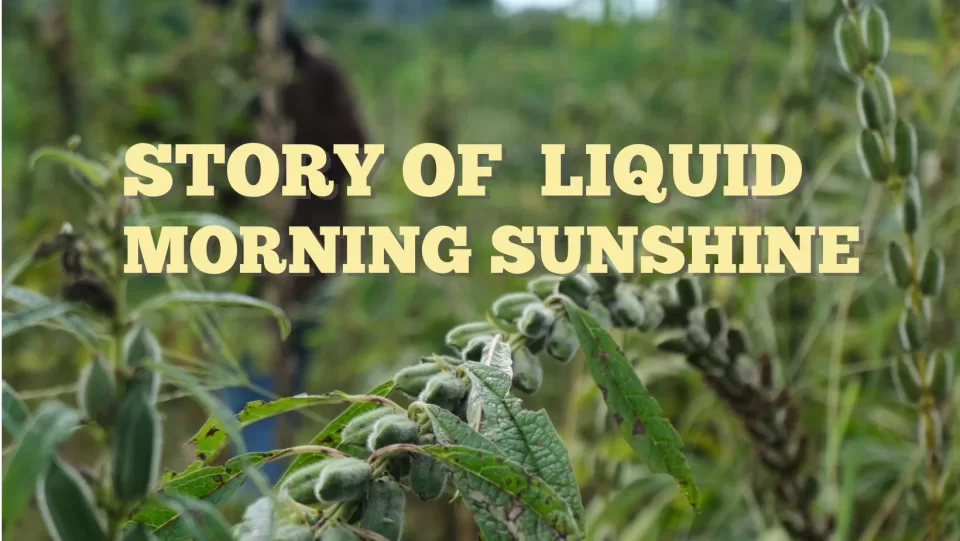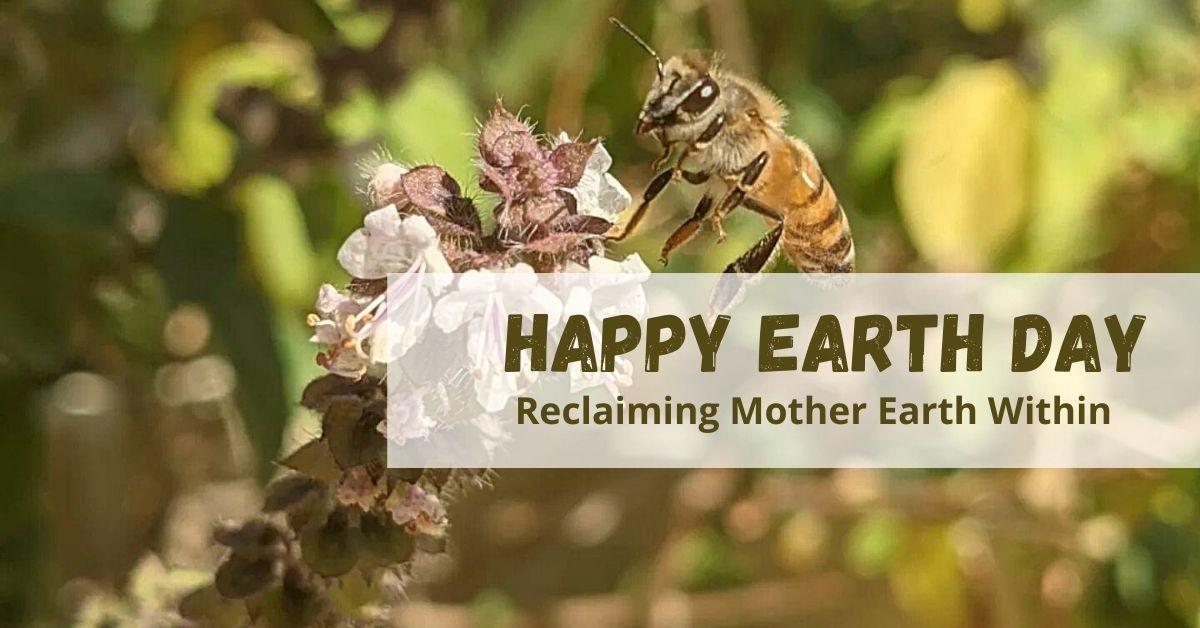
Reclaiming the Earth Within: Earth, Air, Water, Fire & Ether
April 26, 2022
Forest Fire, a Blessing in Disguise
March 28, 2023How It’s Made: Charcoal
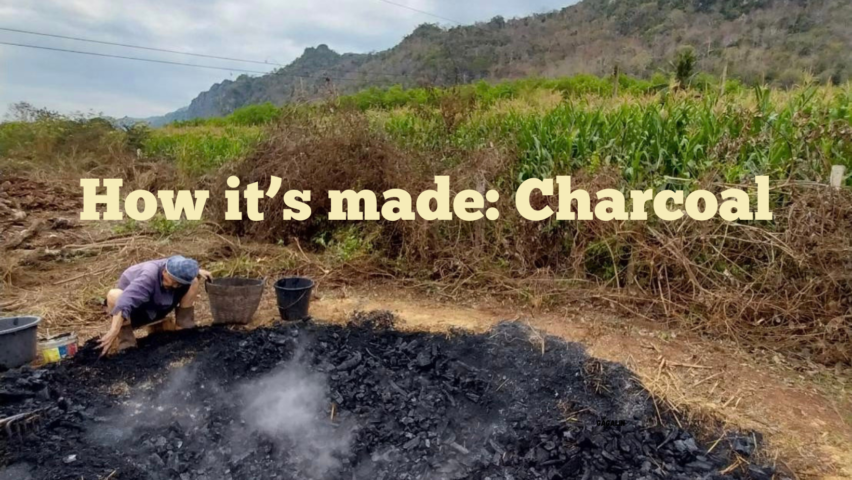
Every year, during this time of the year at our farm, grandma would eagerly look up in the sky awaiting the perfect weather to undertake a time-honored tradition: making charcoal. And that’s what we’ll be sharing with you today.
Charcoal has long been valued as a source of fuel, especially in cooking. However, for us, it’s more than just a means of cooking – it’s a way of life that inspires us to live sustainably and feel connected to the earth. This carbon-neutral fuel has taught us to appreciate the simple life and to have a deep respect for the natural world. Using charcoal has become a part of our lifestyle, and it reminds us to embrace the beauty of nature that surrounds us every day.
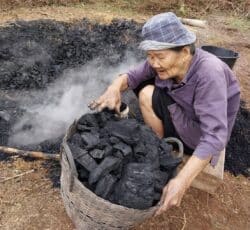
Collecting Charcoal
Carbon Neutral
When the wood is sustainably sourced, charcoal is a carbon-neutral fuel, which means that it does not contribute to the increase of carbon emissions. When wood is burned to create charcoal, the carbon it contains is released as carbon dioxide. However, this carbon dioxide is recaptured by trees as they grow, creating a cycle that does not add any net carbon to the atmosphere. By using the tree branches of the fruit trees that we trim during the rainy season, we are able to create a sustainable and carbon-neutral fuel that is both traditional and practical.
How to Make Charcoal the Traditional Way
Making charcoal is a labor-intensive process that requires careful attention to detail. For us, this is a once-a-year event that happens in the beginning of summer. We start the process by collecting trimmed branches from the different fruit trees around our house in the winter season and allow them to dry for several months until summer arrives.

Lining the wood for traditional charcoal making
When summer comes, the process begins. First, we find a proper open space and prepare the burning ground by digging a rectangular pit that measures 2×1.5 meters with a depth of 50 cm. We then carefully line the pit with wood, layer by layer, until it is completely full. Once the wood is in place, we cover it with rice husks to control the amount of oxygen and moisture from entering the pit.
We then set fire to the wood at the bottom of the pit, making sure that not too much air gets inside. As the wood burns, it produces black smoke into the air. However, after two days, the smoke becomes transparent, indicating that the burning is fully completed and what remains is pure carbon – or charcoal. Throughout the burning process, we keep a close eye on the pit, monitoring the temperature and ensuring that the fire is burning evenly. From time to time, we also spray water on the rice husks to prevent them from catching fire and to help regulate the temperature.
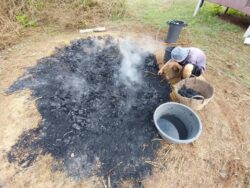
Once we know that the wood has turned into charcoal, we spray water into the pit to extinguish the fire and let the charcoal dry in the sun for several days, until it is completely dry and ready for use. This traditional labor-intensive process results in a high-quality charcoal that we can use in a variety of ways.
Smoke from Charcoal Production
While traditional charcoal production has its advantages, it is not a perfect process. The first phase of charcoal production often produces black smoke that can be detrimental to the environment. This smoke contains volatile organic compounds (VOCs) and other particulate matter that can harm air quality and human health. Despite this, it is important to note that traditional charcoal production can still be sustainable when conducted at a small scale once a year.
However, as we acknowledge the need to address the environmental impact of charcoal production, we continuously seek ways to improve the process and reduce its negative effects. By taking steps to mitigate the harm caused by the smoke produced during the initial phase, we can help ensure that traditional charcoal production remains a viable and sustainable practice.
Benefits of Charcoal

Cooking with charcoal in our kitchen
Using charcoal has a number of benefits beyond its sustainability. For us, cooking over charcoal is a way to connect with our ancestors and honor the traditions that have been passed down through generations of farmers. It’s a way to slow down, appreciate the simple things in life, and be more in tune with the natural world around us.
In addition, cooking over charcoal always makes food taste better. The high heat and smoke that are produced by burning charcoal create a unique flavor that is difficult to replicate with any other form of fuel. Whether we’re grilling vegetables, roasting meats, or making a pot of soup, using charcoal always adds an extra layer of flavor that we can’t get with gas or electric stoves.
Finally, using charcoal is a cost-effective way to cook and heat our home. Because we create our own charcoal from branches that have fallen on our land, we don’t have to pay for fuel or firewood. This allows us to save money and reduce our overall expenses, which is important for any small-scale farmer.
At our farm, apart from using charcoal to cook our meal, we also use it to make our popular No-Poo Head-to-Toe Wash which is made made only three ingredients, Kaffir Lime, Bitter Orange, Mee Leaf, water and nothing else. These three ingredients would be boiled over an open fire stove using charcoal. We believe that by preserving and utilizing these traditional practices, we are fully tapping into the traditional knowledge that has been passed down for generations and taking a step towards a more sustainable and mindful future.
If you’d like to learn more how we make the No-Poo Head-to-Toe Wash, please click on this link to learn more!
For those who why our charcoal is considered sustainable, please visit this link to learn more about sustainable charcoal production practice and unsustainable practices. (It involves using wood waste or cutting down trees to make charcoal)



